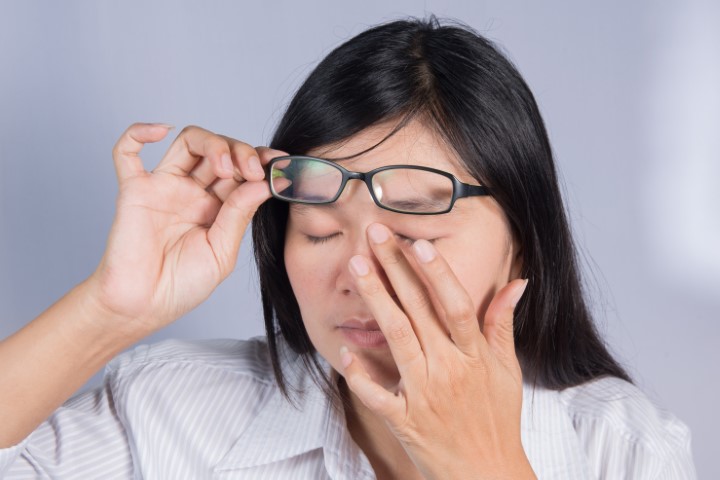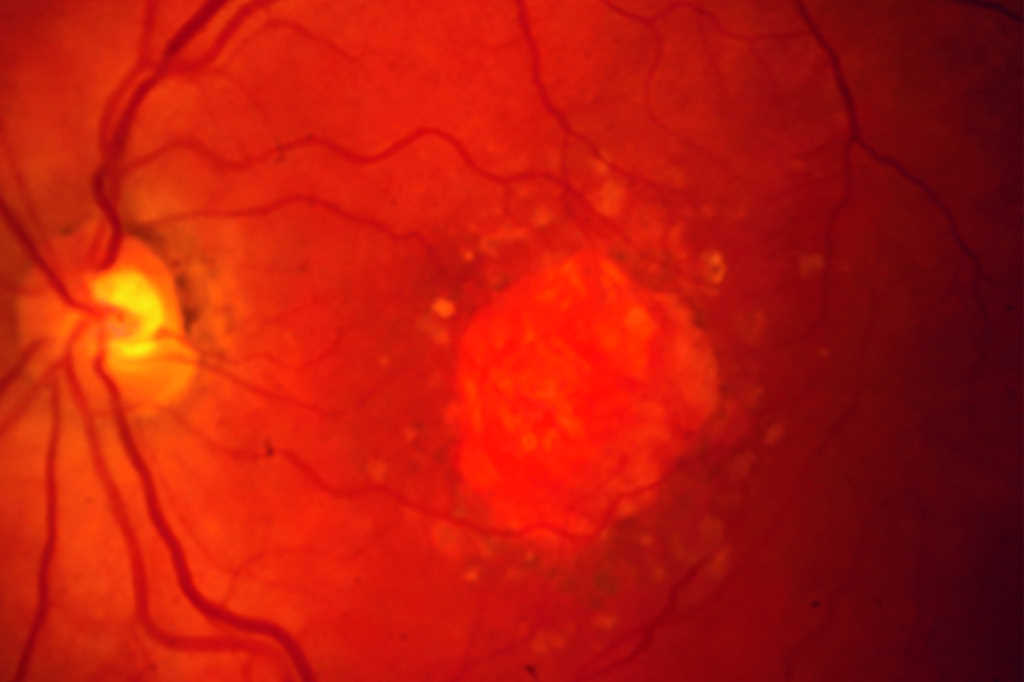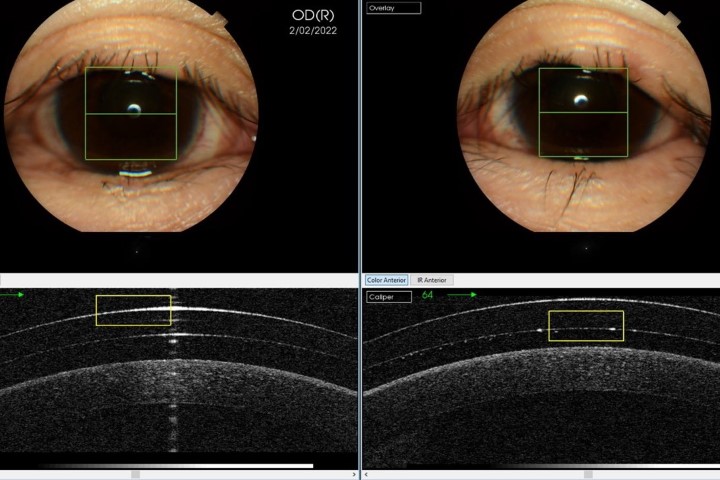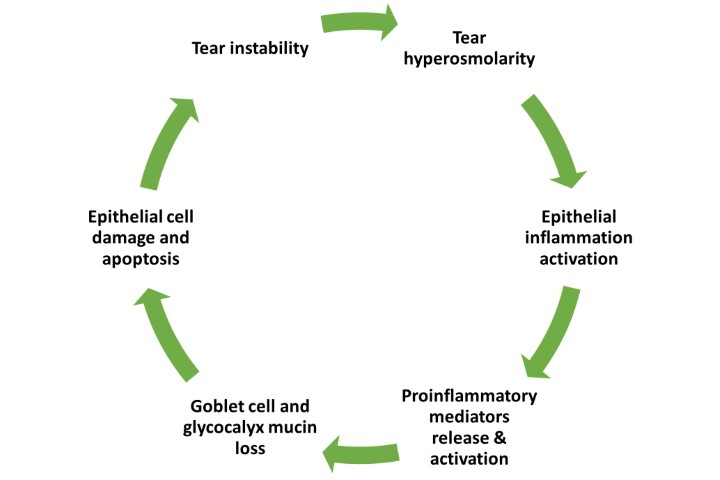Dry eye research review 2023
NOV03 for signs and symptoms of DED associated with MGD: MOJAVE study
Sheppard JD et al, on behalf of the MOJAVE study group
Am J Ophthalmol 2023, 252, 265–274
Review: This phase 3, double-masked, controlled trial evaluated the efficacy and safety of NOV03 (perfluorohexyloctane) ophthalmic drop for the treatment of signs and symptoms of dry eye disease (DED) associated with meibomian gland dysfunction (MGD). The study enrolled 620 adult patients diagnosed with DED and signs of MGD across 42 sites in the US: 311 in the NOV03 group and 309 in the control group. Eligible patients were randomised to receive either NOV03 or hypotonic saline solution (0.6%; control) four times daily for eight weeks.
Results showed patients treated with NOV03 experienced a significantly greater reduction in primary signs and symptoms of DED, based on total corneal fluorescein staining (tCFS) and eye dryness, assessed on a visual analogue scale (VAS) from baseline to week eight compared with the saline group. The least squares mean treatment difference for change between the groups was -1.2 and -10.2 in tCFS score and VAS, respectively, from baseline to week eight. In addition, the rate of ocular adverse events (AEs) was similar between NOV03 (12.9%) and saline control (12.3%). All AEs in the treatment group were mild or moderate in intensity and none led to treatment discontinuation.
Comment: NOV03 is a water-free, non-steroidal, preservative-free treatment shown to reduce the evaporation rate of saline by 80% in a previous in vitro study. The current study confirms the positive findings of previous clinical trials and has led to the successful FDA approval of Miebo (Bausch + Lomb, Novaliq) for the treatment of signs and symptoms of DED. In Australia and New Zealand, it is marketed by AFT Pharmaceuticals as Novatears.
To supplement favourable short-term outcomes, longer-term evaluation of the treatment is warranted. A year-long, open-label safety extension trial of NOV03 (KALAHARI) was recently completed which will provide additional information regarding long-term use. The current study, however, was limited by the exclusion of patients with severe DED and the preservative (0.01% benzalkonium chloride) used in the saline drop applied to the control group.
Topical diquafosol versus hyaluronic acid for the treatment of DED: a meta‑analysis
Sun X et al
Graefes Arch Clin Exp Ophthalmol 2023 (online ahead of print)
Review: Diquafosol enhances fluid transfer and mucin secretion from conjunctival epithelial and goblet cells on the ocular surface. This is the first meta-analysis to compare the efficacy and safety of topical diquafosol to hyaluronic acid (HA) as a treatment for DED. A database search was conducted and a total of nine randomised clinical trials involving 1,295 patients with DED were included.
Pooled results showed that, compared to treatment with 0.1% HA, topical application of 3% diquafosol for up to 12 weeks significantly improved patient-reported symptoms using the Ocular Surface Disease Index, with a mean difference in score of -3.59. Signs of DED, including improved production of aqueous tears and stability of tear film, were also significantly improved with treatment of topical diquafosol. These were evidenced by improved results of the Schirmer test, with a mean difference of 1.08mm; tear breakup time, with a mean difference of 0.60; corneal fluorescein staining score, with a mean difference of -0.20; and ocular rose bengal staining score, with a mean difference of -0.62, compared to treatment with HA. Safety outcomes reported only mild adverse events, with eye discharge being the most frequent adverse event in the diquafosol group, while there were no adverse events in the HA group.
Comment: Diquafosol ophthalmic solution 3% has been commercially available in Asia since 2010 under the brand name Diquas (Santen). Notably, this study included comparisons between topical diaquafosol and only HA, to minimise potential confounding effects arising from different control treatments on the outcomes. The number of studies included, however, was limited and the sample sizes were generally small. Larger scale clinical trials would assist in validating the findings. Based on product availability, all studies to date have been conducted in East Asia, with data relating to other ethnicities and regions still to be explored. As the treatment duration of the studies was only up to 12 weeks, evaluation of longer-term efficacy and safety of diquafosol compared to HA for DED is also warranted.
Associations between intake of dietary micro- and macro-nutrients with DED (Blue Mountains Eye Study)
Guo B et al.
Clin Nutr ESPEN 2023, 54, 258–263
Review: Nutrients can be considered as macronutrients (eg. fats, protein, carbohydrates) or micronutrients (eg. vitamins, minerals). This study analysed cross-sectional data from the Blue Mountain Eye Study to report the relationship between the dietary intake of a broad range of macronutrients and micronutrients and the presence of DED symptoms.
A total of 1,952 urban Sydney residents aged 60 years or over completed a validated semi-quantitative 145-item food frequency questionnaire and a DED questionnaire. A total of 1,528 responses were recorded, of which 902 (59.0%) were female. At least one DED symptom from among ‘dryness, grittiness, itchiness, discomfort and watering’ was reported by 53.8% of participants, more commonly by women (58.2%) than by men. Participants in the highest quartile of vitamin B12 intake had 36% lower odds of experiencing more than two reported DED symptoms compared to those in the lowest quartile. Higher dietary intake of vitamin C, vitamin B1, polyunsaturated fats and calcium, were each associated with a reduced likelihood of reporting more than two DED symptoms. Higher total fat intake was significantly associated with increased odds of reporting ocular discomfort.
Comment: This study is reportedly the first to assess a broad range of dietary factors and their relationship to DED symptoms. A limitation of this study is that a non-validated questionnaire was used to collect DED symptom data. Furthermore, the risk that the reported symptom of ‘itchiness’ may be associated with ocular allergy is not acknowledged. In addition, the cross-sectional nature of the study means any causative nature of factors cannot be assumed. Nevertheless, and aligning with the outcomes of the recently published TFOS Lifestyle: Impact of nutrition on the ocular surface report (see story p44), this research supports the consideration by clinicians of the current and prior dietary intake of their patients who present with DED. Dietary modification has the potential to be a useful strategy in managing DED if clear relationships between diet and symptoms are established.

Dian Zhuang is a New Zealand-trained optometrist and a PhD candidate with the Ocular Surface Laboratory in the University of Auckland’s Department of Ophthalmology.
























